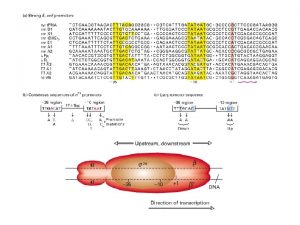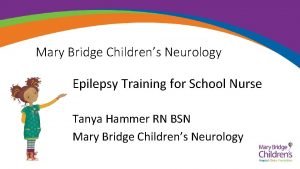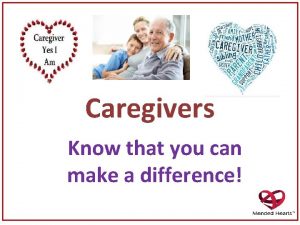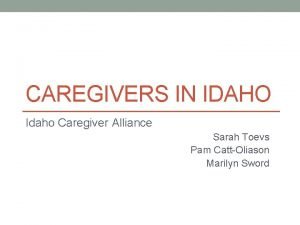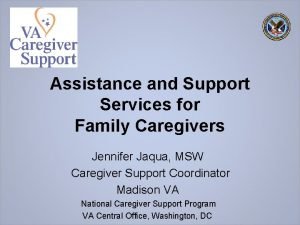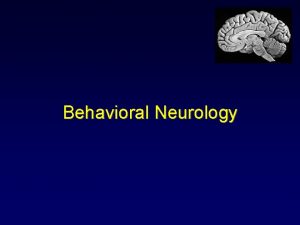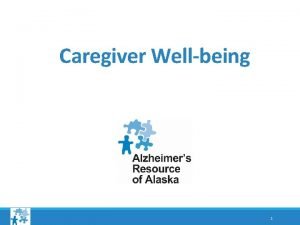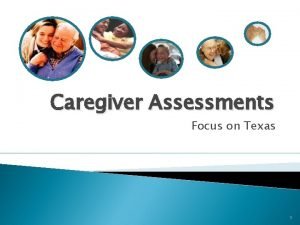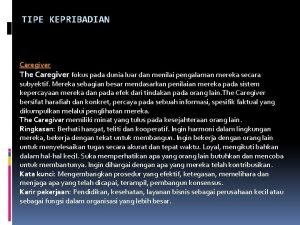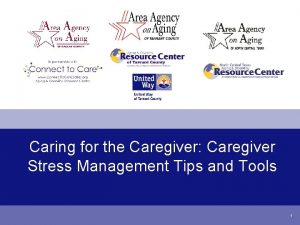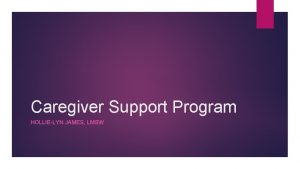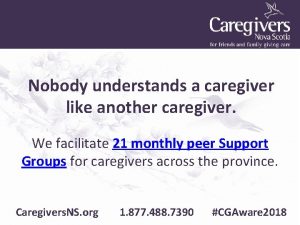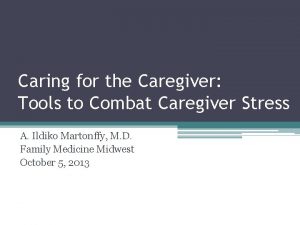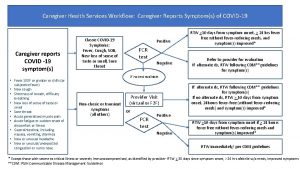PREINITIATION CAREGIVER TRAINING Pediatric Neurology Paul R Carney












- Slides: 12

PRE-INITIATION CAREGIVER TRAINING Pediatric Neurology: Paul R. Carney, MD Zhao Liu, MD, Ph. D Edgard Andrade, MD Pediatric Gastroenterology (GI): Joel Andres, MD Christopher Jolley, MD Research Coordinators: Peggy R. Borum, Ph. D Lauren L. Jones, Ph. D

Overview of KT Fasting was recognized as a way to control seizures. Seizures would return once a normal diet was resumed. In 1921 KT was born. Although therapy helps many children, we do not know how it works.

Ketogenic Therapy (KT) High fat, low carbohydrate, adequate protein diet Ketogenic Ratio = Fat : protein + carbohydrate Forces the body to utilize fat (in the form of ketones) rather than carbohydrates as the main source of energy Ketones are a byproduct of fatty acid metabolism

Ketogenic Therapy (KT) Neurological treatment not a diet for weight control Similar to your otherapies for seizures such as antiepileptic drugs (AEDs) All changes that are made must be cleared by the research team and your clinical providers For these reasons, we do not call it the Ketogenic Diet

Ketogenic Therapy (KT) Keto. Buddy Support network Improve your child’s care Research the mechanism of KT Weekly contact Data collection Create and make meals Resource to assist you with all your child’s needs We DO NOT change medications or provide any medical advice.

UF Ketogenic Therapy Research Program Keto. Buddy support system More frequent monitoring of your child’s overall health More labs More measurements Metabolic cart Daily records Monitor the progress and personalize your child’s therapy Patient visits are at Shands in the GCRC All research procedures are done free of charge Inpatient visits at the GCRC are free of charge

Qualifications for Ketogenic Therapy Typically (but not exclusively) used for children If AEDs or otherapies are ineffective or produce undesirable side effects If a surgical procedure is not an option Intended for patients without fatty acid oxidation disorders

Before Initiation Food Preferences Questionnaire In order to help your child adjust into a state of ketosis easier, the weekend before: Limit simple sugars and starches Drink sugar-free or unsweetened liquids Night before Initiation: Overnight fast for at least 8 hours Allowed to have water and medications

Initiation Day 1 -2 Start on a 1. 5: 1 ratio of fat : protein + carbohydrate Ratio increases by 0. 5 every 1 -2 meals Day 3 Usually discharge between a 3: 1 to 4: 1 ratio

What to Bring to Initiation Caregivers Guide Foods/drink for Initiation that you and your Keto. Buddy discussed Daily home records of seizures Multistix 10 SG Food Scale All medications and supplements in their original bottles Videos, DVD player and DVDs, favorite toys, coloring books…something to keep your child occupied and feel more at home

What will be provided at Initiation A mini fridge, microwave, and kitchen supplies One caregiver will be provided with meals during their GCRC stay Wireless internet access is available if you wish to bring your laptop

What to expect the first few weeks after Initiation Adjustment period may include Lethargy Nausea/Vomiting Hunger Record keeping
